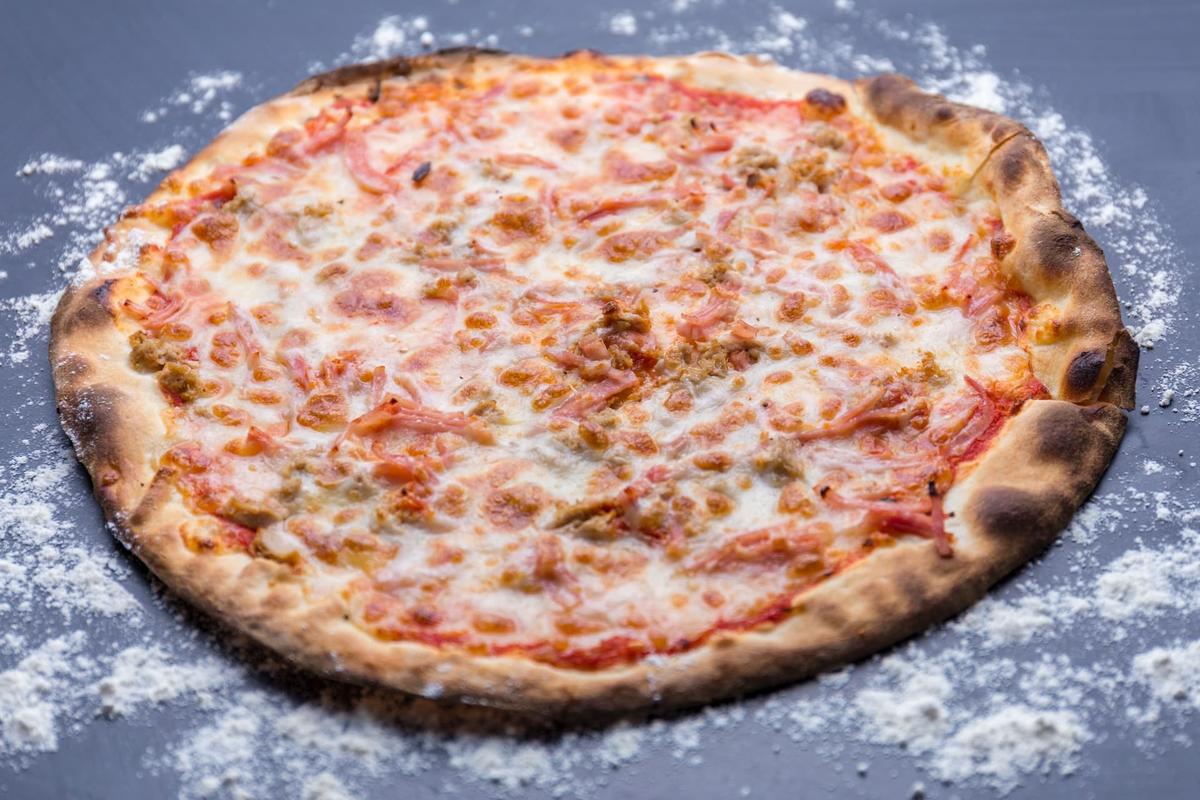
Salami
03-10-2022
Salami is a cured sausage consisting of fermented and air-dried meat, typically pork. Historically, salami was popular among Southern, Eastern, and Central European peasants because it can be stored at room temperature for up to 40 days once cut, supplementing a potentially meager or inconsistent supply of fresh meat. Countries and regions across Europe make their own traditional varieties of salami.
The word 'salami' in English comes from the plural form of the Italian salami. It is a singular or plural word in English for cured meats of a European (particularly Italian) style. In Romanian, Bulgarian, and Turkish, the word is salam; in Hungarian, it is szalámi; in Czech it is salám; in Slovak, it is saláma while Polish, French, German, Greek and Dutch have the same word as English. The name may be derived from the Latin word salumen.
Fermentation—allowing beneficial or benign organisms to grow in food to prevent destructive or toxic ones from growing, with respect to meat, has been around for thousands of years. This is evident in the presence of various types of sausages found globally. Also, environmental conditions dictate what food processes are used, as seen in the Mediterranean and southern Europe, where meat products are dried to lower water activity (Aw) values, taking advantage of the long, dry and sunny days, while in northern Europe, fermented sausages require smoking for further preservation.
The maker usually ferments the raw meat mixture for a day, then stuffs it into either an edible natural or inedible cellulose casing, and hangs it up to cure. Some recipes apply heat to about 40 °C (104 °F) to accelerate fermentation and drying. Higher temperatures (about 60 °C (140 °F)) stop the fermentation when the salami reaches the desired pH, but the product is not fully cooked (75 °C (167 °F) or higher). Makers often treat the casings with an edible mold (Penicillium) culture. The mold imparts flavor, helps the drying process, and helps prevent spoilage during curing.
The bottom of the pizza, called the 'crust', may vary widely according to style – thin as in a typical hand-tossed Neapolitan pizza or thick as in a deep-dish Chicago-style. It is traditionally plain, but may also be seasoned with garlic or herbs, or stuffed with cheese. The outer edge of the pizza is sometimes referred to as the cornicione. Some pizza dough contains sugar, to help its yeast rise and enhance browning of the crust. Dipping sauce specifically for pizza was invented by American pizza chain Papa John's Pizza in 1984 and has since been adopted by some when eating pizza, especially the crust.
Mozzarella cheese is commonly used on pizza, with the buffalo mozzarella produced in the surroundings of Naples. Other cheeses are also used, particularly Italian cheeses including provolone, pecorino romano, ricotta, and scamorza. Less expensive processed cheeses or cheese analogues have been developed for mass-market pizzas to produce desirable qualities like browning, melting, stretchiness, consistent fat and moisture content, and stable shelf life. This quest to create the ideal and economical pizza cheese has involved many studies and experiments analyzing the impact of vegetable oil, manufacturing and culture processes, denatured whey proteins, and other changes in manufacture. In 1997, it was estimated that annual production of pizza cheese was 1 million metric tons (1,100,000 short tons) in the U.S. and 100,000 metric tons (110,000 short tons) in Europe.




